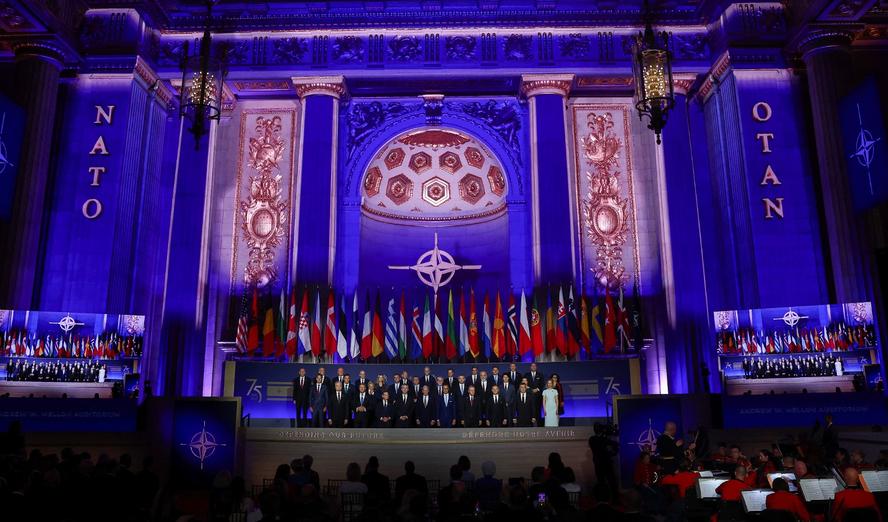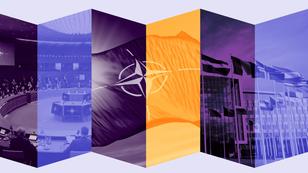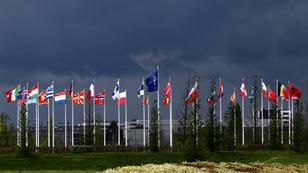This summer's NATO summit marked 75 years of the transatlantic alliance, and ten years of its return to NATO's core business: deterring and defending against Russia, “the most significant and direct threat to Allies' security.” The summit was certainly a display of political unity, but to maintain such cohesion, NATO needs to increase its defense industrial base (DIB) capacity, as well as adopt an acquisition strategy that meets the growing demand for weapons and ammunition. And it needs to do both things in a way that navigates political sensitivities.
NATO's defense industrial base was one of the key topics of the summit, and its problems are well known. Years of falling demand and increases in technological sophistication of Western arms have led to a weakening of competition (PDF) and an increase in per-unit cost. Now, the United States (PDF), the European Union, and NATO have launched efforts to increase defense production. However, such an increase requires investment in facilities and workforce throughout the supply chain, which will take time and money. Both things are in short supply given the immediate needs in Ukraine, demands of rearming Europe, and domestic economic priorities.
Furthermore, even though the Allies agree in principle that Russia is a threat, and that NATO must produce more, they are divided on the precise sense of urgency as well as their proximity to the Russian threat. Such differences, in turn, affect the priorities in investment and acquisition decisions. For example, when Russia launched its full-scale invasion, Poland sent its legacy systems to Ukraine. This gap, coupled with heightened threat perception, created a sense of urgency that led Poland to sign massive arms deals with South Korea, a new partner that was able to start deliveries quickly. Germany and France, on the other hand, seem to prioritize investment in their domestic defense industries, even if the results of such investments might take more time.
NATO needs to increase its defense industrial base capacity, as well as adopt an acquisition strategy that meets the growing demand for weapons and ammunition.
Traditionally, the United States has preferred that its NATO allies “buy American” through the Foreign Military Sales (FMS) program for interoperability, quality, and economic reasons. However, this U.S. preference also has significant downsides: the FMS process is infamously lengthy, the U.S. equipment is expensive and not readily available (thus limiting the quantities Allies can acquire), and, once acquired, its upkeep often poses supply chain challenges, particularly in a protracted war. In this situation, the U.S. government now supports setting up coproduction, closer to the demand—as it did during the Cold War—but where exactly that coproduction in Europe will be located remains an open question.
The different priorities among NATO allies in terms of the investment and acquisition have already created tensions. Given the pledged increase in defense spending (PDF), the direction of cash flow—as well as new jobs and increased tax revenue that come with it—is, politically, no small question. In this situation, the Allies need to decide whether they operate in a peacetime paradigm, where investment and acquisition decisions are driven by economic competition, or if they are operating in a wartime paradigm, where Allies cooperate to ensure that NATO as a whole has the capability to defend itself when and where it's needed. They don't need to operate in the same paradigm, but they need to understand each other's priorities and embed within them tradeoffs between price, delivery time, security of the supply chain, interoperability, and other economic and political considerations.
As for the United States, the surge in demand for its equipment presents a strategic opportunity beyond strengthening the domestic DIB capacity. The Poland–South Korea cooperation shows that new relations between Europe and the Indo-Pacific can be forged when availability becomes the number one priority. This is a welcome move towards integrating U.S. allies and partners across theaters, building supply redundancies for major contingencies, and strengthening ties between like-minded countries. The United States could support this process by providing technical support for interoperability upgrades. Taking integrated deterrence one step further has never been more important than now, in the face of tightening cooperation between U.S. adversaries.




